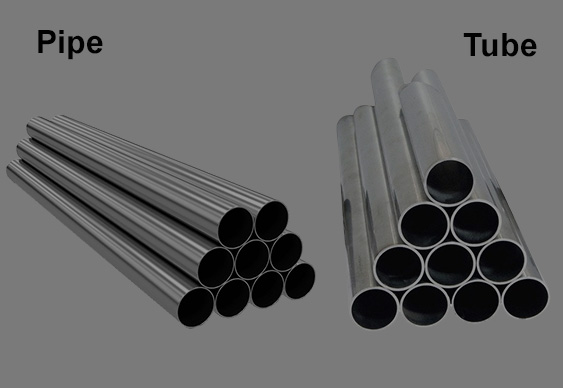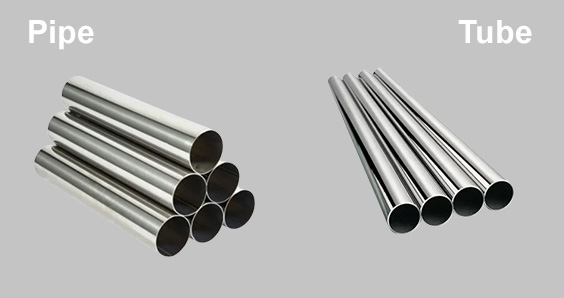
In the field of industrial uses, seamless pipes and seamless tubes are very crucial parts. Due to their high durability, strength and resistance to corrosion they are widely used in the oil and gas industries, construction and many others. Water pressure is one of the significant parameters that define the efficiency and durability of these materials. This blog post explores the influence of water pressure on smooth pipes and tubes and the products such as ASTM A312 and ASTM A106.
Seamless pipes and tubes are made without any weld or a seam and thus they have consistent shape and structure. This continuity offers better mechanical characteristics, which makes them more appropriate in high pressure applications. Seamless pipes and tubes are stronger compared to welded pipes because the latter may have areas of weakness at the seam; thus, seamless pipes and tubes are suitable for high pressure fluid transport, including water.
Water pressure can be defined as the pressure exerted by water inside a system. Water pressure can differ greatly depending on the requirements of the industrial application of the system. High water pressure is required in most cases to deliver the fluid through long distances or through complicated piping system. However, this pressure can cause a lot of stress to the pipes and tubes and this in turn will affect their performance.
The hardness of LSAW pipes is normally determined by the standard tests such as Rockwell hardness, Brinell hardness, and Vickers hardness tests. These methods include using a probe to indent the material with a certain force and determining the size of the indentation or the depth of the probe. The results indicate the degree of deformation of the material and offer a hardness number that can be used to compare the materials or check whether a pipe can be used for a particular purpose
Piping fatigue is when pipes and tubes are under cyclic loading; that is, the pressure of water changes with time. This puts a repetitive stress on the material and over time this causes the material to weaken and develop cracks and ultimately fail. Stress corrosion cracking is another major problem; high water pressure with a corrosive environment will make the material crack and fail.
Erosion and CorrosionHigh water pressure can cause erosion inside the seamless pipes and tubes at a much faster rate. Due to the high velocity of water flow, the inner surface of the pipes gets eroded gradually, and thus becomes thin and fails. Furthermore, corrosion is another problem that is evident particularly in pipes made of metals that are prone to rusting. The use of water particularly in the transport of corrosive agents will lead to corrosion of the pipes and thus shorten their life span.
Bursting and LeakageThe first and the worst consequence of high water pressure is the bursting of the pipes. Seamless pipes and tubes are very strong but they have certain pressure rating limits. Going beyond these limits can lead to pipe rupture and this can be very destructive and dangerous at times. Also, high water pressure leads to leakage through any crack or any other weak area and this affects the efficiency and safety of the system.
ASTM A312 and ASTM A106 are two specifications of pipes, where the former is for stainless steel pipes and the latter for carbon steel pipes. These specifications make the pipes to have high quality and performance standards that allow them to be used in high pressure systems
Water pressure can impact the longevity and efficiency of seamless pipes and tubes. High pressure increases the risk of material fatigue, erosion, and bursting, potentially leading to costly repairs and safety hazards. Understanding these impacts is crucial for maintaining the integrity of piping systems
The performance and safety of seamless pipes under water pressure depend on material selection, regular maintenance, and proper installation. High-pressure applications require materials that can handle the stress without compromising safety or efficiency

When designing systems involving seamless pipes and tubes, several factors must be considered.
The pressure-bearing capacity can be calculated using the formula
P=2⋅S⋅tDP = \frac{2 \cdot S \cdot t}{D}P=D2⋅S⋅t Where :
Perform calculations based on material properties and dimensions to determine the safe operating pressure
3. Calculation of Safety FactorThe safety factor is calculated to ensure that the pipes operate within safe limits. It is given by
Safety Factor=Ultimate StrengthOperating Pressure\text{Safety Factor} = \frac{\text{Ultimate Strength}}{\text{Operating Pressure}}Safety Factor=Operating PressureUltimate Strength
Thus, it is important to know how water pressure affects the pipes and tubes made of seamless materials to ensure that the industrial piping systems are strong and effective. High pressure applications are met by products like ASTM A312 and ASTM A106 but material fatigue, erosion, and corrosion must be taken into account. Thus, industries can prolong the life of their piping systems and avoid adverse consequences of high water pressure by choosing the right materials, maintaining the systems properly, and controlling pressure
You can Contact Nufit Flanges at sales@nufitalloys.com to know more about seamless pipes and tube, and their applications in various industries.